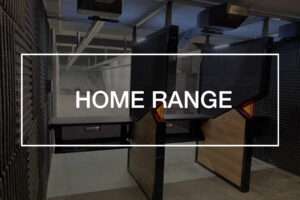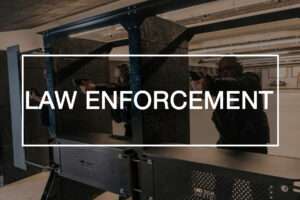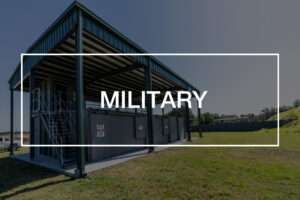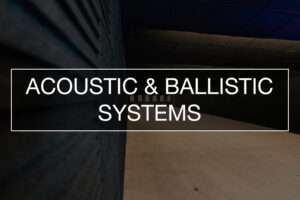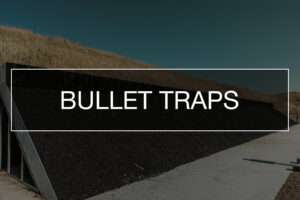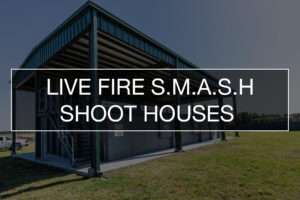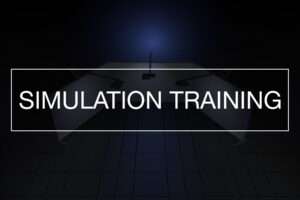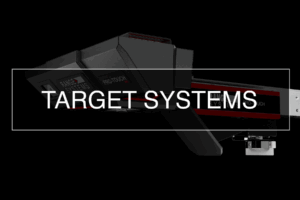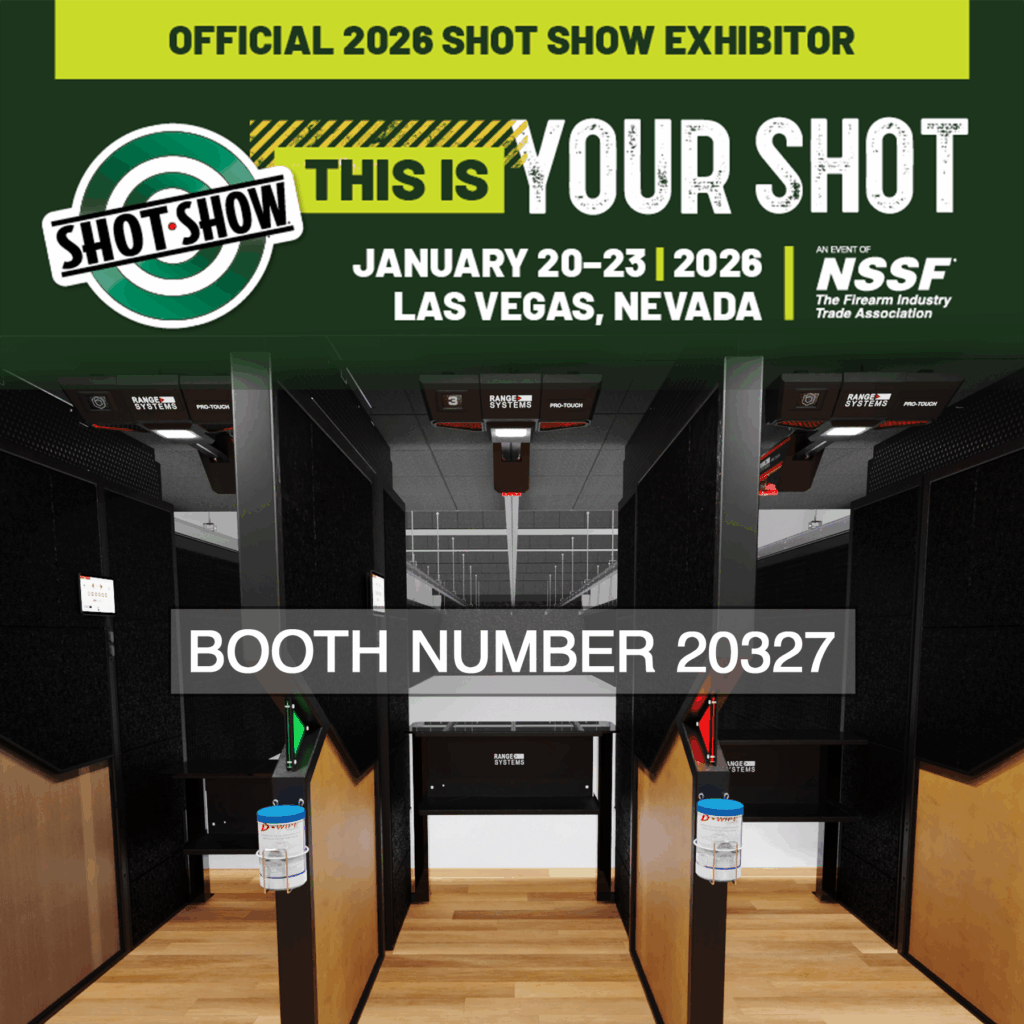Webinar: How Do I Build A Home Indoor Shooting Range
[rs-responsive-iframe]
[/rs-responsive-iframe]
The first webinar we put together in the month of October was aimed towards our civilian sector of customers. Many people know that having a home indoor shooting range is a possibility but aren’t sure what goes into it, or where they can get started. We will try to answer all of these questions here.
Where Will You Put Your New Home Indoor Shooting Range?
The first step in the process to building your home indoor range is identifying the space. Where will you be putting the range? Along with this, it is important to know if your putting your range into a new space or building within existing. Some common spots we have seen past costumers put ranges include pole barns/storage buildings, under garages, basements, or even underground bunkers that double as a safe room.
Building A New Home Indoor Shooting Range
If you plan on incorporating an indoor range to a building that you plan to build or a new building, it’s important to consider a few things while planning the build in order to have a usable spot for a range. Your first step should be to connect your architect with your shooting range provider as soon as possible. This is key to specify requirements like ceiling height, ceiling type, and wall structure. By considering these requirements from the start, you will be able to make the process go a lot smoother.

Build A Home Range Into Existing
When building into existing, two points you should be thinking about from the start are the access points and the “Box-within-a-Box” concept. Access points are key to know so you have a good way to get into the range, but also because you need to know where you plan to bring all of the building materials in. Some components within a range can be big and heavy so it’s important to know you’ll have the right access to get those items into the range. The “Box-within-a-Box” concept is the best way to create a range. By confining the range to a concrete box within a bigger box (the room or space your range is in) you’ll be able to know no rounds can escape. Pouring concrete or using cinder blocks to create this box will both work and are the best options.
Permitting
Permitting is important in the process of building a range. A key thing to know is that each city/ municipality/ county is going to be unique when it comes to permitting. Some areas may not have a process in place for the construction but most places will have a noise ordinance to abide by. Due diligence is required for anywhere you plan to build. For more advice on how to go about permitting the best idea is to talk to your range provider.
Determining Needs and Budget
Now that you know where you want to build and have an idea on the permitting process, you should think about the intended use for your range and the amount you have to spend. There is a wide range of possibilities based on location and space. There’s a big difference between a pole barn range and a luxury home basement range. At Range Systems, we can do everything from a simple bullet trap range to a 3-lane premium range with pop up targets, 270 degrees of fire, and custom finishing. Determining your needs is key to finding what extras you might want.

Ventilation and Range maintenance
Ventilation and range maintenance are important for every indoor range. With ventilation, it’s key to draw air down range, rather than blow it down range. It’s also important that the range ventilation doesn’t connect to the rest of the house. This is key in keeping lead dust and other unwanted particles away from your living area. Lead cleaning wipes, soap, and laundry detergent are also necessary to containing unwanted particles and materials. Having a clean range makes it much more enjoyable and safe to use. This is what you should strive for.

Important Considerations and Cost With A Home Indoor Shooting Range
- The important considerations of every indoor range include the following:
Sealed in space:
The box-within-a-box design is the best way to approach a home range. The two best ways to create this box inside a box is by using either 6 inch poured concrete or 8-inch center fill cinder blocks. Using these guarantees that no rounds will escape. - Overhead protection:
Having a concrete ceiling is also a key to a safe range. If a concrete ceiling isn’t possible there are other options, however they aren’t as safe. Along with the concrete ceiling, it’s important to have ceiling baffles from your shooting range provider. There are a few diffident options in this area, so talk to your provider. - Sound:
Being that your indoor range will be in a sealed space, it’s important to think about sound not only inside the range but out as well. There are many ways to take care of reverberation (inside the space) as well as transference (outside the home/surrounding properties). One great option Range System can provide is acoustic dura panels. For the same price as normal dura panels, this component can take care of a lot of sound inside and out of the range. - Pricing:
Pricing is always a big question we get when talking about home indoor ranges. It’s important to note that there are so many different options that reflect the cost of an indoor home range. The price can vary from $10,000 for a simple bullet trap set up, to a couple hundred thousand dollars for a premium home range with all the bells and whistles. Typically, we set a price point around $60,000 for most home indoor ranges but again this largely depends on the extras you want to add.
Key Takeaways
- Engage with shooting range provider sooner rather than later. This will help in the process of planning and permitting and will give you the ability to get exactly what you want, in the easiest way possible.
- Determine new vs existing and what your needs are. The planning of a range changes whether you plan to build into an existing space or a new building. Along with this, determining your needs will help your home range provider get you accurate plans for what you want. By determining these things from the start, the process will go a lot smoother.
- Practice due diligence with permitting. The last thing you want is to get halfway through a build and realize you missed a permit for your range. Consult your home range provider for the best advice on permitting.
- Ventilation and range maintenance are two things to familiarize yourself with when you start the process of building a range. Keeping a clean range is key to a smooth operation.
Additional Information
You can find additional information on home indoor ranges, and anything related to ranges at www.nssf.org/ranges. Along with this, check out our blog or webinars section on the site to find other topics we’re discussing. To receive information for our upcoming webinars, subscribe through the webinars section on our site.
If you want to talk with one of our range specialists find the “Contact Us” section of our site to fill out a contact form, or contact a specialist directly through email.
Thanks for reading and we’ll see you on the range!



